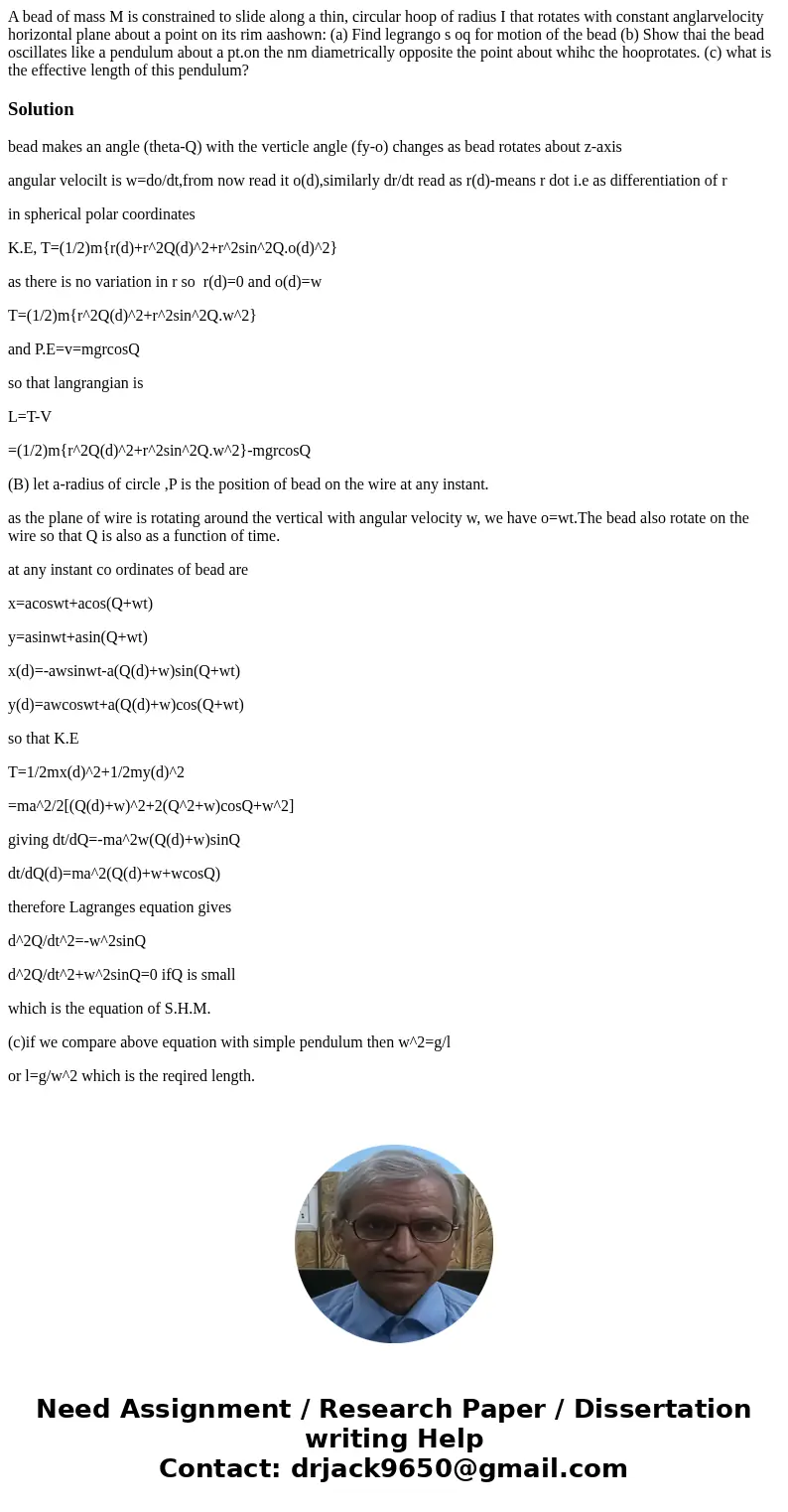A bead of mass M is constrained to slide along a thin circul
Solution
bead makes an angle (theta-Q) with the verticle angle (fy-o) changes as bead rotates about z-axis
angular velocilt is w=do/dt,from now read it o(d),similarly dr/dt read as r(d)-means r dot i.e as differentiation of r
in spherical polar coordinates
K.E, T=(1/2)m{r(d)+r^2Q(d)^2+r^2sin^2Q.o(d)^2}
as there is no variation in r so r(d)=0 and o(d)=w
T=(1/2)m{r^2Q(d)^2+r^2sin^2Q.w^2}
and P.E=v=mgrcosQ
so that langrangian is
L=T-V
=(1/2)m{r^2Q(d)^2+r^2sin^2Q.w^2}-mgrcosQ
(B) let a-radius of circle ,P is the position of bead on the wire at any instant.
as the plane of wire is rotating around the vertical with angular velocity w, we have o=wt.The bead also rotate on the wire so that Q is also as a function of time.
at any instant co ordinates of bead are
x=acoswt+acos(Q+wt)
y=asinwt+asin(Q+wt)
x(d)=-awsinwt-a(Q(d)+w)sin(Q+wt)
y(d)=awcoswt+a(Q(d)+w)cos(Q+wt)
so that K.E
T=1/2mx(d)^2+1/2my(d)^2
=ma^2/2[(Q(d)+w)^2+2(Q^2+w)cosQ+w^2]
giving dt/dQ=-ma^2w(Q(d)+w)sinQ
dt/dQ(d)=ma^2(Q(d)+w+wcosQ)
therefore Lagranges equation gives
d^2Q/dt^2=-w^2sinQ
d^2Q/dt^2+w^2sinQ=0 ifQ is small
which is the equation of S.H.M.
(c)if we compare above equation with simple pendulum then w^2=g/l
or l=g/w^2 which is the reqired length.

 Homework Sourse
Homework Sourse